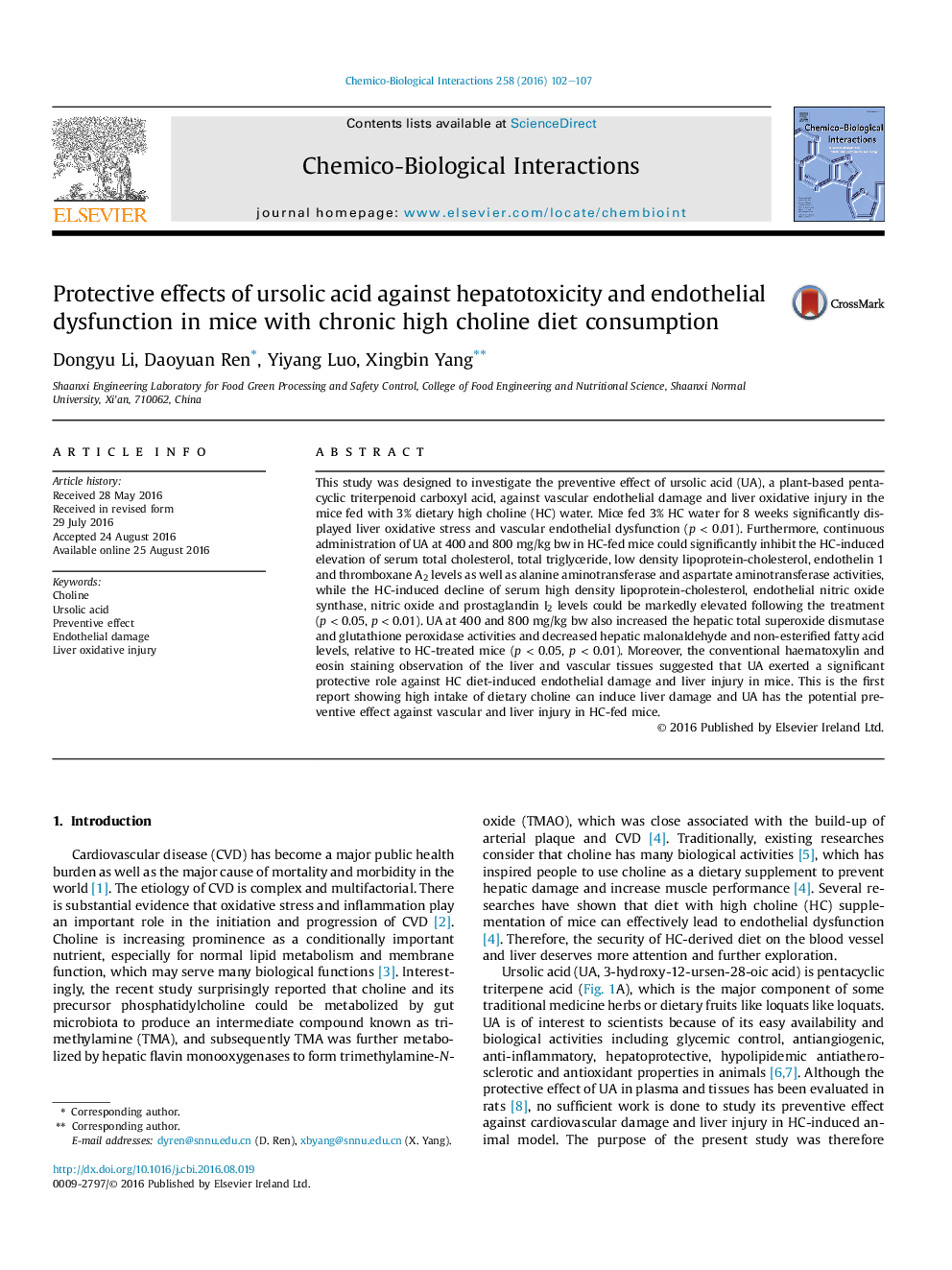| Article ID | Journal | Published Year | Pages | File Type |
|---|---|---|---|---|
| 2579770 | Chemico-Biological Interactions | 2016 | 6 Pages |
•We firstly find that dietary choline may cause liver damage in mice.•We examine the toxic mechanism involved in vascular damage on high choline-fed mice.•Ursolic acid shows protective effects on choline-induced vascular endothelial dysfunction.•Ursolic acid shows protective effects on choline-induced hepatic oxidative injury.
This study was designed to investigate the preventive effect of ursolic acid (UA), a plant-based pentacyclic triterpenoid carboxyl acid, against vascular endothelial damage and liver oxidative injury in the mice fed with 3% dietary high choline (HC) water. Mice fed 3% HC water for 8 weeks significantly displayed liver oxidative stress and vascular endothelial dysfunction (p < 0.01). Furthermore, continuous administration of UA at 400 and 800 mg/kg bw in HC-fed mice could significantly inhibit the HC-induced elevation of serum total cholesterol, total triglyceride, low density lipoprotein-cholesterol, endothelin 1 and thromboxane A2 levels as well as alanine aminotransferase and aspartate aminotransferase activities, while the HC-induced decline of serum high density lipoprotein-cholesterol, endothelial nitric oxide synthase, nitric oxide and prostaglandin I2 levels could be markedly elevated following the treatment (p < 0.05, p < 0.01). UA at 400 and 800 mg/kg bw also increased the hepatic total superoxide dismutase and glutathione peroxidase activities and decreased hepatic malonaldehyde and non-esterified fatty acid levels, relative to HC-treated mice (p < 0.05, p < 0.01). Moreover, the conventional haematoxylin and eosin staining observation of the liver and vascular tissues suggested that UA exerted a significant protective role against HC diet-induced endothelial damage and liver injury in mice. This is the first report showing high intake of dietary choline can induce liver damage and UA has the potential preventive effect against vascular and liver injury in HC-fed mice.
Graphical abstractFigure optionsDownload full-size imageDownload as PowerPoint slide
